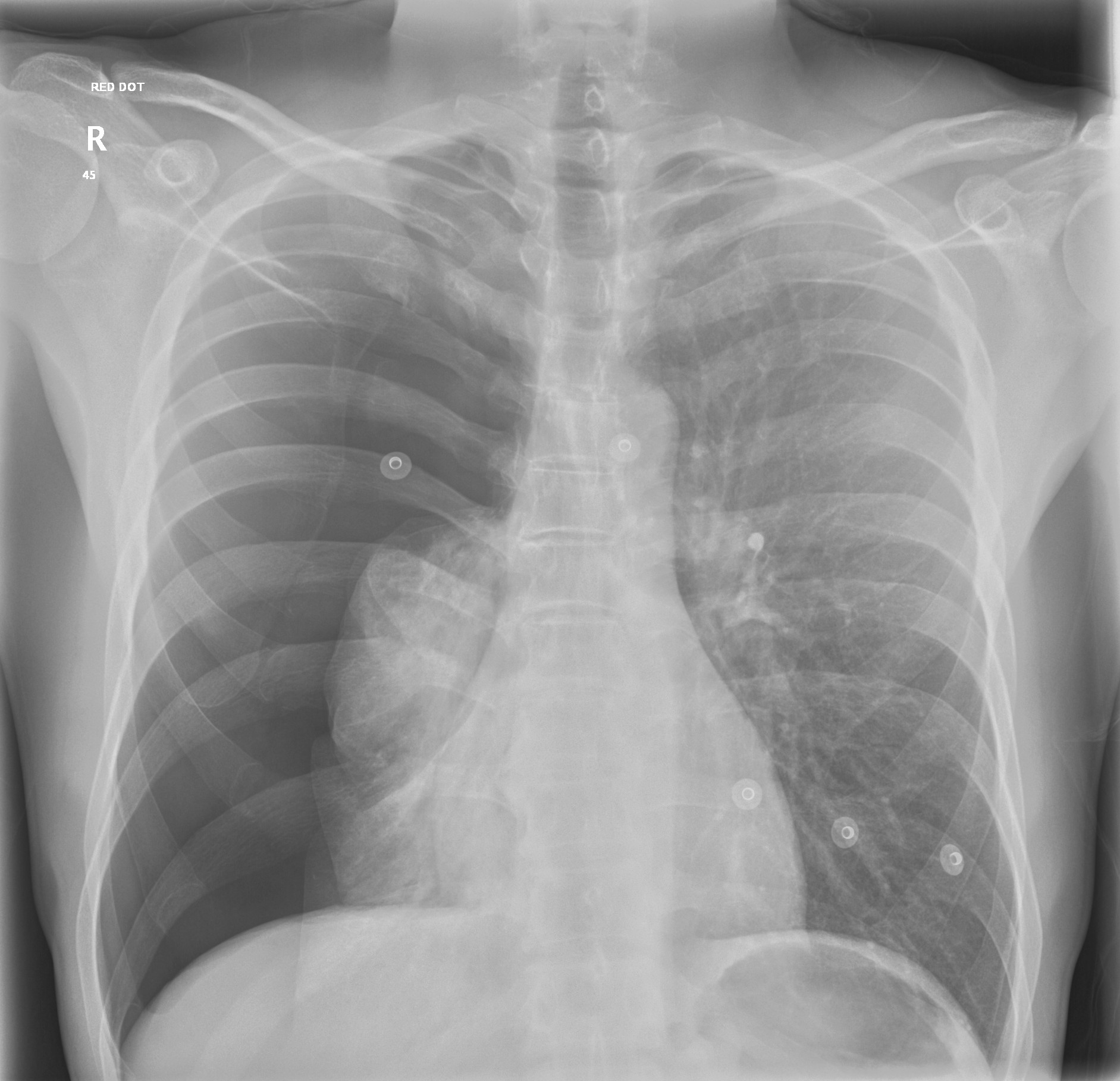#MiniTeach: Short Of Breath
"A 29-year-old lady presented with chest pain and shortness of breath. She was tachycardic at 107 but unfortunately, the rest of her observations were not taken."
She was otherwise fit and well, but was taking the oral contraceptive. ECG and d-dimer were normal. She was initially diagnosed as having an anxiety attack.
1. What does the X-ray show?
A large right sided pneumothorax
2. Who is at risk of developing this condition? And how is this condition classified?
Spontaneous: Primary (in tall, thin people, more often men, commonly smokers. Increased risk with positive family history)
Secondary (due to pre-existing lung disease, including COPD, Asthma, Cystic Fibrosis, Tuberculosis, Whooping cough, Cancer, Connective tissue disease and catamenial pneumothorax caused by pleural endometriosis)
Traumatic pneumothorax (from blunt or penetrating trauma)
Iatrogenic pneumothorax (Central lines, positive pressure ventilation)
Tension pneumothorax
3. According to national guidelines, how should the patient be managed?
BTS guidelines: As this patient has a primary spontaneous pneumothorax, needle aspiration would be the first line intervention, proceeding to fine bore chest drain if this fails.
4. What is the role of oxygen in this condition?
The British Thoracic Society advocates oxygen therapy if the patient is breathless, or has sats of below 92% in air.
In addition, oxygen is recommended for those patients who are admitted for observation and conservative management as oxygen therapy accelerates the clearance of the pneumothorax.
5. What’s the deep sulcus sign?
A deep costo-phrenic angle seen on a supine CXR indicating a pneumothorax.
Reference: http://www.nejm.org/doi/full/10.1056/NEJMicm1105315








